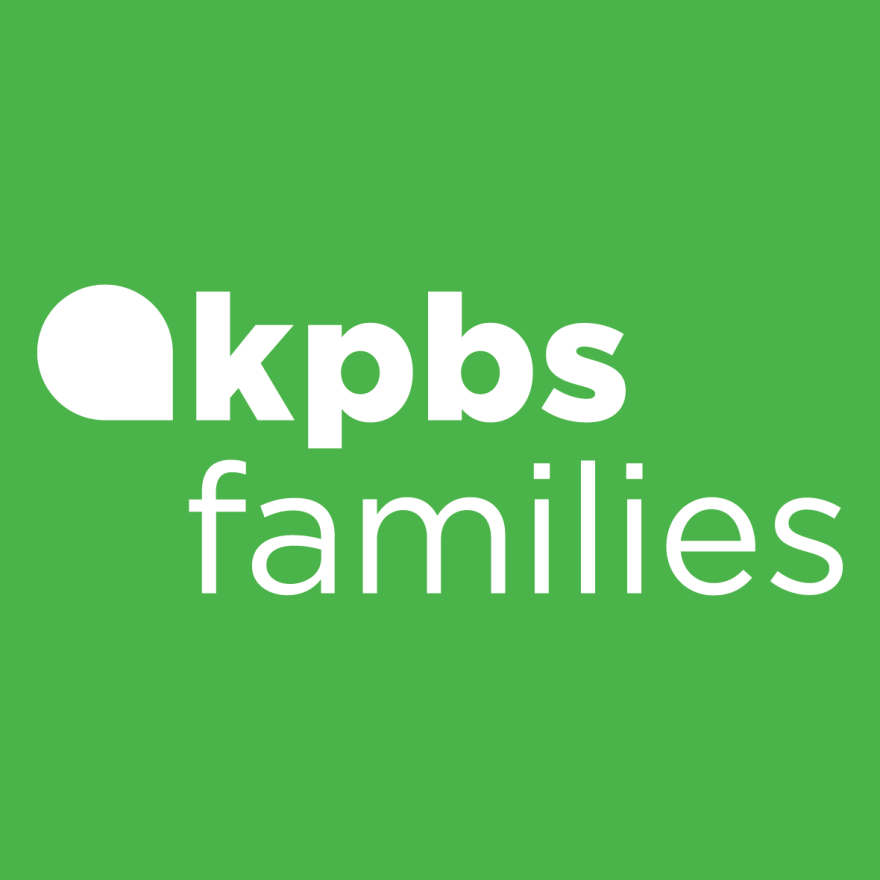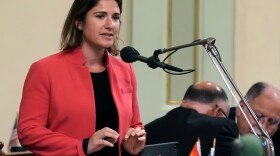Luca Pollack sits on the floor in his Carlsbad home with drawings scattered around the carpet. He points out details in the illustrations, which show a journey he’s planned for his spacecraft called Fortitude: landing on the ocean ice of Europa, one of the moons of Jupiter.
“This is it landing,” he said, pointing to one drawing. “It actually has an individual thruster right here. And this will extend to cushion the impact.”
Outer space is infinitely huge and it occupies a similar-sized part of our imaginations. Now, NASA is running an essay contest called Power to Explore to get kids to imagine future space missions. Third grader Luca is one of 45 semifinalists in the nationwide competition.
“We want to engage their imagination. We want them to think big, just like we do here at NASA. So we want them to envision, if you could go anywhere in the solar system, where would you go?” said Concha Reid, deputy of NASA’s space science project office.
Luca wanted to go to Europa because he was stoked, thinking about its oceans and their potential for life. He said when Fortitude lands on Europa, it becomes a wheeled rover that can travel over the ice.
“So it’s going to drive up to one of the ice cracks and it’s going to use a drill to cut through the thinnest layer of ice that it can. And once it does that it opens a little port in its belly,” Luca said.
And through that port comes Luca's second vehicle, a tiny submarine that goes through the ice hole and starts swimming in the liquid water below. It will look for signs of life and send data back to the rover, which sends it back to earth.
He calls his submarine Resilience.
NASA told the kids in the contest they’d be using the Radioisotope Power System (RPS) to propel their ships through space. In space-age time, it’s an old technology, having been used for six decades, Reid said.
But the nuclear engine that runs on decaying plutonium has powered Mars Rovers and it continues to power the spaceships of the Voyager Project. Launched in the late '70s, Voyagers 1 and 2 are now at the very edge of the solar system.
Even RPS has its limitations, of course, and some space scenarios dreamed up by kids in NASA’s essay contest may be technologically far-fetched by today’s standards. But Reid said that’s okay.
“We don’t know what technology we will have in the future,” she said. “You know, we have innovations in materials that are going on all the time. We have innovations in the IT world. So we’re not (letting the kids) change the laws of physics. But we don’t know what we don’t know.”
“We want to engage their imagination. We want them to think big, just like we do here at NASA. So we want them to envision, if you could go anywhere in the solar system, where would you go?”Concha Reid, deputy of NASA’s space science project office
Luca’s mom, Danielle Pollack, said science and technology have always come naturally to him.
“He was always very mechanical even as a child. Like when he was on a carousel he’d be looking up at the gears and that sort of thing. He was always just drawn to that,” Pollack said.
Luca is waiting to see if he will become a finalist in the Power to Explore competition. He said being in a NASA essay contest is "pretty cool," and he hopes this experience with NASA won’t be his last.
“I would love to work with NASA,” he said. “I really also want to learn about space.”
Luca’s idea of a rover that will drill a hole in the ice of Jupiter’s moon may not take place. But Concha Reid said today NASA is planning a real life voyage to a moon of Saturn, Titan.
The name of the helicopter craft they want to land on Saturn’s moon is called Dragonfly.








